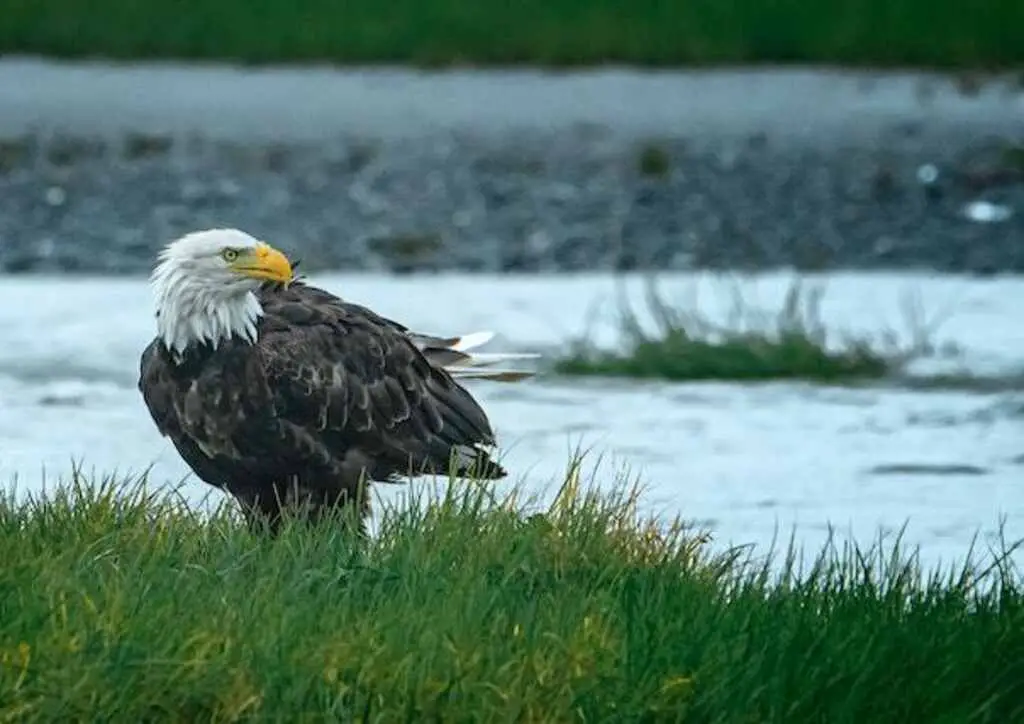Do Eagles Eat Turtles? Prepare to be shell-shocked as we uncover a surprising twist in the dietary preferences of these majestic hunters.
Recent studies reveal that eagles, known for their remarkable skills, have developed a taste for turtles.
Join us as we explore the intricate relationship between these species, their hunting techniques, and the vital role they play in the ecosystem.
Discover the adaptability of eagles, the types of turtles they prey upon, and the ecological significance of this newfound dietary preference.
Get ready to soar into a fascinating journey that highlights the delicate balance between eagles and turtles while igniting our conservation efforts.
Table of Contents
- 1 Key Takeaways
- 2 Do Eagles Eat Turtles
- 3 The Hunting Techniques of Eagles
- 4 Types of Turtles Preyed Upon by Eagles
- 5 The Role of Eagles in the Ecosystem
- 6 Adaptations of Eagles for Turtle Hunting
- 7 The Importance of Turtles in the Diet of Eagles
- 8 Coexistence of Eagles and Turtles
- 9 Conservation of Turtles and Eagles
- 10 Cultural and Symbolic Significance
- 11 Observing Eagles and Turtles in the Wild
- 12 Further Resources and Research Opportunities
- 13 Frequently Asked Questions
- 13.1 How do eagles locate turtles in their environment?
- 13.2 What are the physical characteristics that allow eagles to successfully catch and consume turtles?
- 13.3 Are there any negative impacts on the ecosystem if eagles were to disappear or significantly reduce their consumption of turtles?
- 13.4 Are there any specific strategies or techniques that eagles employ when hunting turtles?
- 13.5 Are there any other predators that compete with eagles for turtle prey in their habitat?
- 14 Conclusion
- 15 Author
Key Takeaways
- Eagles have a surprising preference for turtles as part of their diet.
- Eagle predation on turtles plays a crucial role in population control and influences the distribution and abundance of turtle populations.
- Eagles contribute to ecosystem balance by participating in food web dynamics and exerting top-down control on prey populations.
- Consuming turtles helps regulate turtle populations, supports nutrient cycling, and contributes to the overall health of the ecosystem.
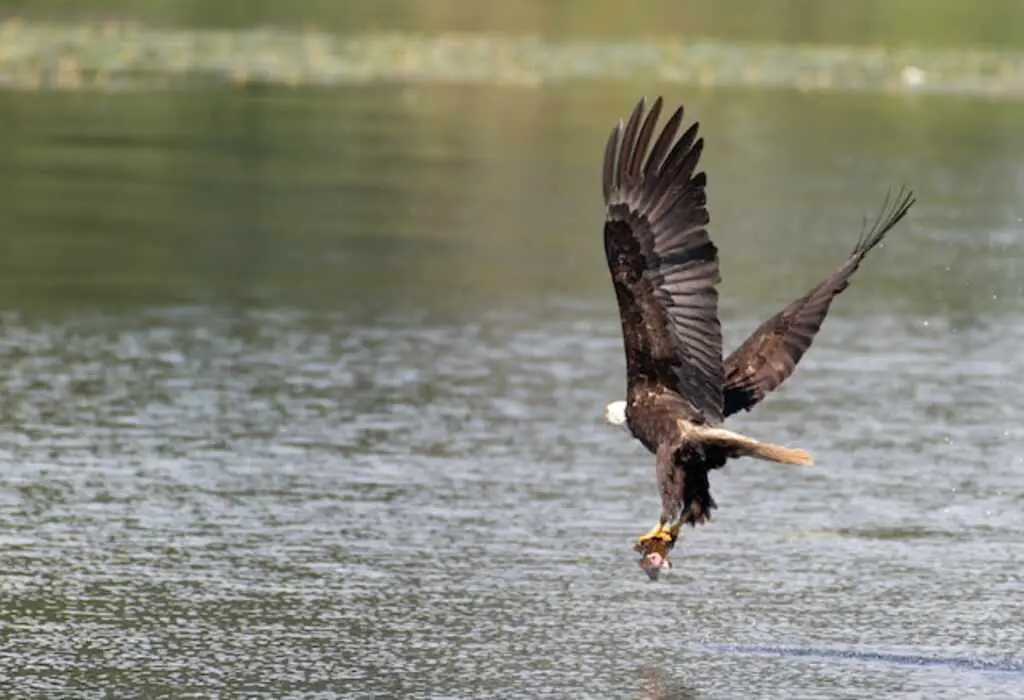
Do Eagles Eat Turtles
Yes, eagles are known to eat turtles. While their primary diet consists of fish and small mammals, eagles are opportunistic hunters and may prey on turtles when available.
Eagles use their sharp talons to snatch turtles from water bodies or capture them on land. Turtles provide a source of nutrition and variety in the eagle’s diet, complementing their carnivorous feeding habits.
The Hunting Techniques of Eagles
Eagles employ a variety of hunting techniques, including swooping down from great heights with precision and agility, to capture their prey.
These majestic birds are known for their remarkable hunting skills, which are honed through years of practice and instinctual behavior.
When it comes to hunting turtles, eagles take advantage of certain turtle behaviors and their own migration patterns.
Turtles, being slow-moving creatures, make an easy target for eagles. Additionally, eagles tend to migrate to areas where turtles congregate, such as rivers, lakes, and coastal regions.
By understanding turtle behavior and their own migration patterns, eagles optimize their chances of successfully preying upon turtles.
This seamless transition from hunting techniques to the types of turtles preyed upon by eagles showcases the adaptability and resourcefulness of these incredible birds.
Types of Turtles Preyed Upon by Eagles
Reptiles of the order Testudines, such as snapping turtles and softshell turtles, are among the various species that serve as prey for raptors.
Eagles, being opportunistic hunters, have been observed preying on turtles in both marine and freshwater habitats.
While eagles are known to primarily target fish and small mammals, turtles are a significant part of their diet, especially during specific seasons or when other prey is scarce.
Eagle migration patterns also play a role in the types of turtles they prey upon, as they may encounter different species in different regions.
For example, Bald Eagles in North America are known to feed on a variety of turtle species, including painted turtles, cooters, and sliders.
Understanding the interactions between eagles and turtles is essential for turtle conservation efforts, as eagles play a significant role in the ecosystem by regulating turtle populations and maintaining ecological balance.
The Role of Eagles in the Ecosystem
The role of eagles in the ecosystem is multifaceted and important for maintaining population control, impacting turtle populations, and contributing to ecosystem balance.
Eagles play a crucial role in population control by preying on various species, including turtles, which helps regulate their numbers and prevent overpopulation.
Additionally, eagles have a significant impact on turtle populations as their predation can influence the distribution and abundance of these reptiles.
Lastly, eagles contribute to ecosystem balance by participating in the food web dynamics and exerting top-down control on prey populations, ultimately shaping the overall structure and function of the ecosystem.
Maintaining population control
To effectively manage population numbers, it is crucial to consider the delicate balance between predator and prey, ensuring that the natural order of ecosystems remains undisturbed.
In the case of turtles, this balance is maintained by their interactions with predators like eagles. Understanding predator-prey dynamics is essential for turtle conservation efforts.
Firstly, eagles play a crucial role in regulating turtle populations by preying on individuals. This helps to control turtle numbers and prevent overpopulation.
Secondly, the presence of eagles creates a selective pressure on turtles, favoring individuals with traits that enhance their chances of survival. This leads to the evolution of stronger and more resilient turtle populations.
Lastly, the predation of eagles on turtles contributes to the transfer of energy and nutrients within the ecosystem, supporting the overall biodiversity.
Considering the impact of eagles on turtle populations, it becomes evident that their role is essential for maintaining the ecological balance and promoting the sustainability of these reptiles.
Impact on turtle populations
One fascinating statistic reveals the significant impact of predator-prey dynamics on turtle populations, demonstrating the crucial role of maintaining a delicate balance within ecosystems.
Eagles, being one of the predators of turtles, play a significant role in shaping turtle populations.
Research has shown that eagles have a considerable impact on other predator populations, as they often compete for the same food sources.
This competition can lead to a decrease in the number of other predators, which in turn affects the overall balance of the ecosystem.
Conservation strategies aimed at protecting turtle populations should also consider the impact of eagles and the need to maintain a healthy predator-prey relationship.
By understanding the intricate connections between different species, conservationists can develop effective strategies that preserve the delicate balance of the ecosystem.
This understanding is crucial in ensuring the long-term survival of turtles and the overall health of the ecosystem.
Moving forward, it is essential to explore how eagles’ predatory behavior contributes to the balance of the ecosystem.
Contribution to ecosystem balance
Eagles’ role as predators in the ecosystem directly influences the intricate web of life, impacting the delicate balance between species. Their predation on turtles plays a significant role in turtle conservation and predator-prey dynamics.
Eagles are known to prey on various turtle species, including both aquatic and terrestrial turtles.
This predation helps control turtle populations, preventing overpopulation and maintaining a healthy balance within the ecosystem.
By selectively preying on turtles, eagles contribute to the overall health and stability of the ecosystem.
Understanding the interactions between eagles and turtles is crucial for effective conservation strategies, as it allows for the development of targeted management plans to ensure the long-term survival of both species.
Transitioning into the subsequent section about ‘adaptations of eagles for turtle hunting,’ it is important to explore the unique characteristics and behaviors that enable eagles to successfully capture and consume turtles.
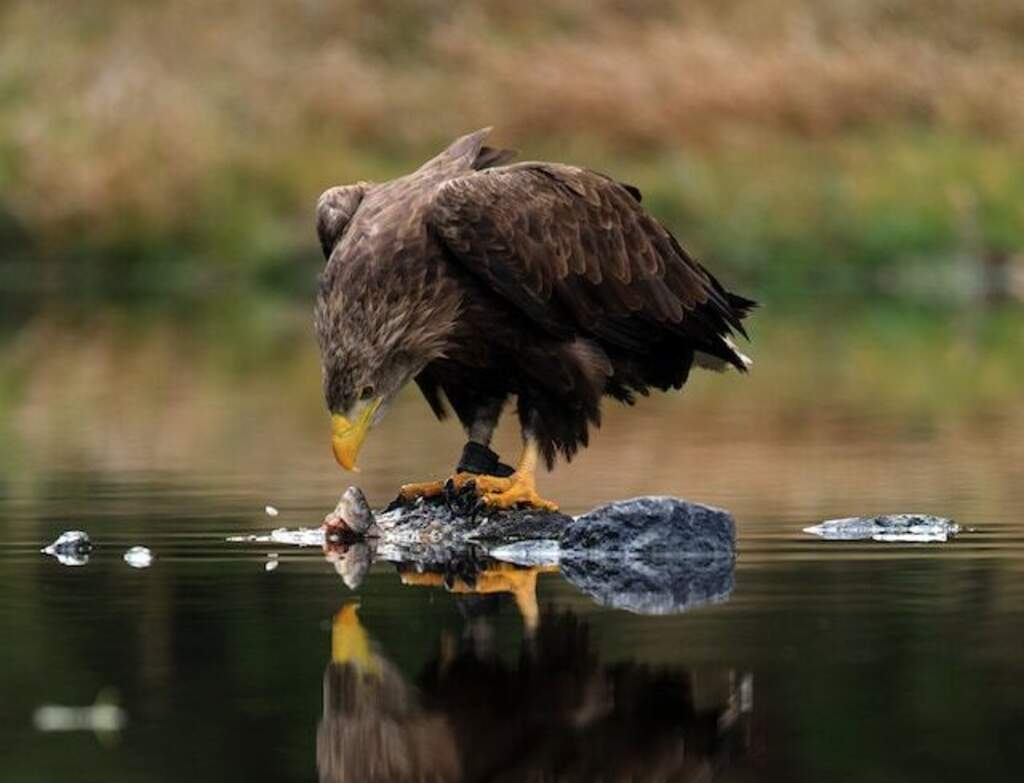
Adaptations of Eagles for Turtle Hunting
The sharp, curved beak of an eagle acts as a formidable tool for puncturing the tough shells of turtles, allowing the bird to access the soft flesh inside.
This physical adaptation enables eagles to effectively hunt and feed on turtles as part of their diet. Eagles employ various hunting strategies when targeting turtles, including aerial attacks and ambushes.
They use their keen eyesight to spot turtles basking on rocks or logs near bodies of water, and then swoop down to grasp them with their powerful talons.
Eagles also use their strong wings and agile flight to lift the captured turtles and carry them to a safe location for consumption.
These adaptations allow eagles to successfully exploit turtles as a food source, contributing to the overall balance of the ecosystem.
The Importance of Turtles in the Diet of Eagles
Eagles have developed several adaptations that enable them to hunt turtles effectively. However, the importance of turtles in the diet of eagles extends beyond their hunting behavior. Turtles play a crucial role in maintaining the ecological balance of their habitats.
- Food source: Turtles provide a substantial and reliable food source for eagles, especially during periods when other prey may be scarce.
- Nutritional value: Turtles are rich in protein, vitamins, and minerals, providing essential nutrients that contribute to the overall health and well-being of eagles.
- Impact on turtle populations: The predation of eagles helps regulate turtle populations, preventing overpopulation and ensuring the survival of healthier individuals.
- Ecological stability: By hunting turtles, eagles indirectly contribute to the balance of the ecosystem, as they help control turtle populations, preventing excessive competition for resources.
Understanding the importance of turtles in the diet of eagles allows for a deeper appreciation of the coexistence between these two species.
Coexistence of Eagles and Turtles
The coexistence of eagles and turtles showcases a delicate ecological balance that highlights the interdependence of species in maintaining the overall health and stability of their habitats.
In the predator-prey dynamics between eagles and turtles, eagles play a crucial role in controlling turtle populations, while turtles provide a significant food source for eagles.
This relationship not only affects the population sizes of both species, but also influences the structure and function of their shared ecosystem.
For instance, the consumption of turtles by eagles helps regulate turtle populations, preventing overgrazing of aquatic vegetation and maintaining the balance of the ecosystem.
Additionally, the remains of consumed turtles contribute to nutrient cycling and support the growth of other organisms in the habitat.
Understanding and conserving this intricate relationship is vital for the long-term survival and sustainability of both eagles and turtles.
Conservation efforts should focus on protecting and restoring turtle habitats, ensuring the availability of prey for eagles, and promoting the overall health of the ecosystem.
This integration of conservation efforts will contribute to the continued coexistence of these two species, safeguarding their respective populations and the ecological balance they sustain.
Conservation of Turtles and Eagles
The coexistence of eagles and turtles raises important concerns regarding the conservation of these species.
While eagles play a crucial role in maintaining ecosystem balance, their predation on turtles can impact turtle populations.
To address this issue, effective turtle conservation strategies are essential. These strategies involve implementing measures to protect turtle habitats, such as nesting areas and feeding grounds, from eagle predation.
Additionally, creating buffer zones between eagle territories and turtle habitats can help minimize interactions between the two species.
Furthermore, promoting public awareness and education about the importance of turtle conservation can foster a greater understanding and support for the protection of these vulnerable creatures.
By prioritizing turtle conservation efforts and finding ways to mitigate the impact of eagle predation, we can ensure the survival and sustainability of both turtles and eagles in their natural habitats.
Consequently, understanding the cultural and symbolic significance of these species becomes imperative.
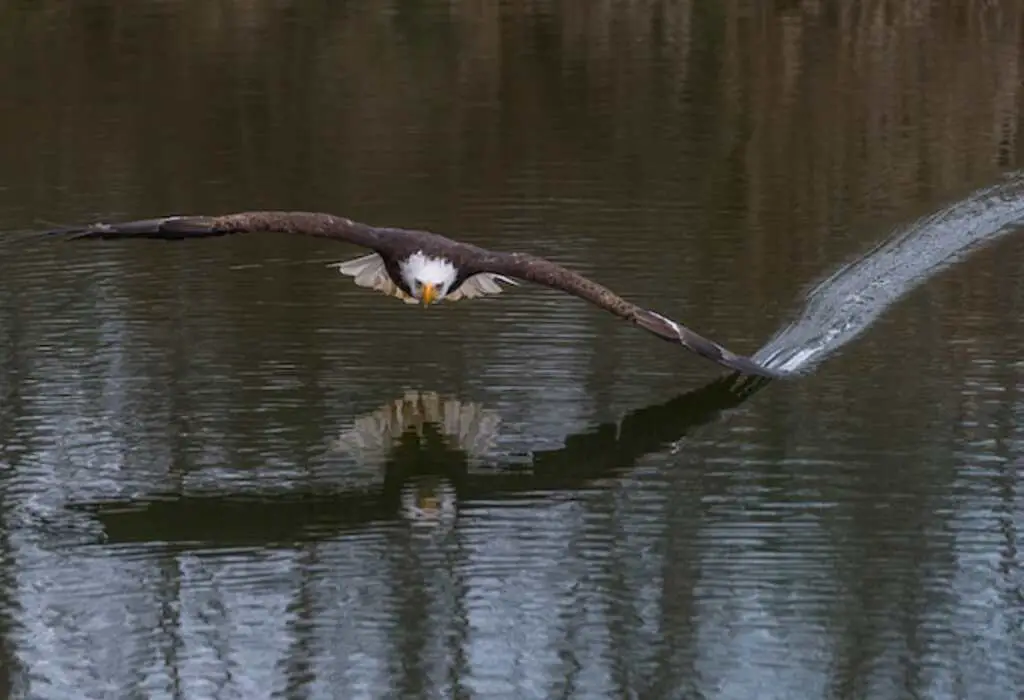
Cultural and Symbolic Significance
Cultural and symbolic significance can be observed in the way eagles and turtles are represented in various indigenous artworks and folklore.
They are often associated with cultural rituals and traditional beliefs, representing a connection between the physical and spiritual realms.
Turtles, on the other hand, are often seen as symbols of longevity, wisdom, and protection. They are revered for their ability to navigate between land and water, representing adaptability and balance.
In indigenous artwork and folklore, eagles and turtles are often depicted together, symbolizing the harmonious relationship between the sky and the earth.
Understanding the cultural and symbolic significance of these animals provides a deeper appreciation for their role in indigenous cultures.
Transitioning to the subsequent section, observing eagles and turtles in the wild allows us to witness their natural behaviors and further understand their ecological importance.
Observing Eagles and Turtles in the Wild
Birdwatching and turtle spotting are popular activities for nature enthusiasts and researchers alike. It allows individuals to observe the behavior and interactions of eagles and turtles in their natural habitats, providing valuable insights into their ecology and biology.
Additionally, ecotourism initiatives centered around eagle and turtle observation can contribute to wildlife conservation efforts by generating awareness and financial support for habitat preservation and species protection.
It is important for participants to engage in responsible and ethical practices, such as maintaining a safe distance, not disturbing the animals or their habitats, and following local regulations and guidelines to minimize any potential negative impacts on the wildlife.
Birdwatching and turtle spotting
Turtle spotting can be an exciting activity for nature enthusiasts, as it allows them to observe the diverse array of turtle species in their natural habitats.
This activity not only provides an opportunity to appreciate the beauty and complexity of these creatures, but also contributes to turtle conservation efforts.
By observing turtles in the wild, researchers and conservationists can gather valuable data about their populations, behavior, and habitat requirements.
Additionally, birdwatching during turtle spotting can offer a unique perspective on the interconnectedness of different species.
For example, the observation of bird migration patterns can provide insights into the availability of food sources or environmental changes that may impact turtle populations.
Understanding these relationships is crucial for effective wildlife conservation.
Transitioning into the subsequent section on ecotourism and wildlife conservation, it becomes evident that turtle spotting can play a significant role in promoting awareness and appreciation for these valuable ecosystems.
Ecotourism and wildlife conservation
Ecotourism and wildlife conservation are interconnected fields that aim to promote the protection and preservation of natural ecosystems and the species that inhabit them.
Ecotourism offers numerous benefits for both the environment and local communities.
By encouraging sustainable practices, such as low-impact tourism activities and responsible wildlife viewing, ecotourism provides a source of income for local communities while minimizing negative impacts on the ecosystem.
It also raises awareness about the importance of wildlife conservation and fosters a sense of responsibility towards the environment.
Sustainable practices in ecotourism include limiting visitor numbers, providing education about local ecosystems, and supporting conservation initiatives financially.
By engaging in these practices, ecotourism contributes to the long-term preservation of wildlife and their habitats.
Transitioning into the subsequent section about ‘responsible and ethical practices’, these principles guide the way ecotourism operates, ensuring the well-being of both the environment and the visitors.
Responsible and ethical practices
Safeguarding the natural environment and promoting sustainable livelihoods are key principles that guide responsible and ethical practices in the field of wildlife conservation.
When it comes to turtle conservation, it is essential to strike a balance between protecting their populations and allowing sustainable hunting practices.
This involves implementing measures to ensure that turtles are not overexploited and their habitats are preserved.
Sustainable hunting practices can include regulations on the number and size of turtles that can be harvested, as well as restrictions on hunting methods that may cause harm to the species or their habitats.
Additionally, promoting alternative livelihoods for communities that rely on turtle hunting can help reduce the pressure on turtle populations.
By considering the long-term sustainability of turtle populations and supporting sustainable hunting practices, we can contribute to the conservation of these incredible creatures.
Transitioning to the subsequent section about ‘further resources and research opportunities’, it is important to continue exploring innovative approaches to turtle conservation.
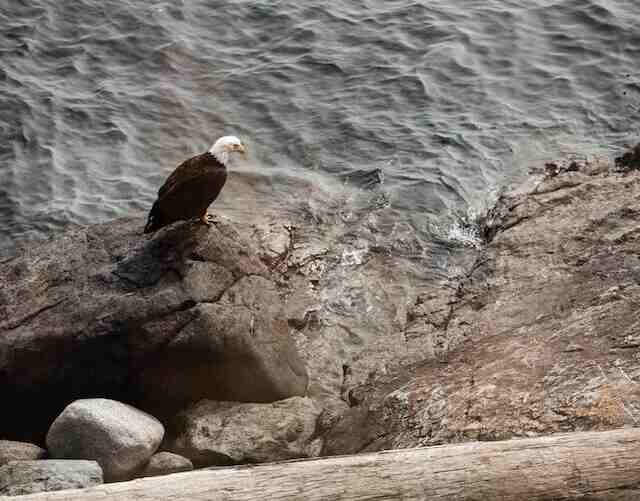
Further Resources and Research Opportunities
Scientific studies and publications provide valuable insights into the behavior, ecology, and conservation of eagles and turtles.
These studies often involve rigorous data collection and analysis, allowing for a comprehensive understanding of these species in the wild.
Citizen science initiatives offer opportunities for individuals to contribute to scientific research by reporting observations and collecting data, thereby enhancing our knowledge of eagles and turtles.
Additionally, educational resources and documentaries provide accessible information to the public, raising awareness about the importance of conserving these iconic species and promoting their protection in their natural habitats.
Scientific studies and publications
Numerous scholarly articles and research papers have explored the dietary habits of eagles, with some shedding light on the potential inclusion of turtles in their prey repertoire.
Scientific research has revealed that eagles exhibit varying dietary preferences depending on their species and geographic location.
For example, the African fish eagle (Haliaeetus vocifer) is known to primarily feed on fish, while the bald eagle (Haliaeetus leucocephalus) has been observed consuming a wider range of prey, including turtles.
One study conducted in North America found that turtles constituted a small proportion of the diet of bald eagles, comprising only 2.6% of their overall prey items.
However, it is important to note that the dietary habits of eagles can vary significantly based on factors such as habitat availability, competition, and individual behavioral patterns.
Understanding these nuances requires further investigation and research.
Transitioning to the subsequent section, citizen science initiatives have played a crucial role in expanding our knowledge of eagle behavior and diet.
Citizen science initiatives
One valuable approach to expanding our understanding of eagle behavior and diet involves the active participation of citizen scientists in research initiatives.
These initiatives provide an opportunity for individuals to contribute to scientific knowledge by collecting data on various aspects of eagle ecology, including hatchling behavior and nesting habits.
Citizen science projects often rely on volunteers to monitor eagle nests, record observations of eagle feeding behavior, and document interactions with other species.
By involving a large number of participants, these initiatives can gather data from a wide range of locations and habitats, providing a more comprehensive understanding of eagle ecology.
This collaborative effort not only enhances our knowledge of eagle diet and behavior but also promotes public engagement and awareness of these majestic birds.
Transitioning to the subsequent section, educational resources and documentaries offer further insight into the fascinating world of eagles.
Educational resources and documentaries
Educational resources and documentaries provide a wealth of information on eagle behavior and diet, allowing viewers to delve deeper into the captivating world of these majestic creatures, prompting them to ponder how their feeding habits may influence their role within their respective ecosystems.
Understanding eagles’ hunting techniques is crucial to comprehend their impact on prey populations and ecosystem dynamics.
These resources often highlight the diverse methods employed by eagles to capture their prey, including aerial strikes, swooping dives, and ambushes.
By studying these techniques, researchers can better understand how eagles maintain population control and contribute to the balance of their ecosystems.
Additionally, documentaries showcase the unique adaptations and anatomical features that enable eagles to be such formidable predators.
Educational resources and documentaries provide a valuable platform for disseminating scientific knowledge and fostering an appreciation for the intricate relationships between eagles and their environment.
| Hunting Techniques | Population Control |
|---|---|
| Aerial strikes | Regulating prey |
| Swooping dives | Maintaining balance |
| Ambushes | Controlling numbers |
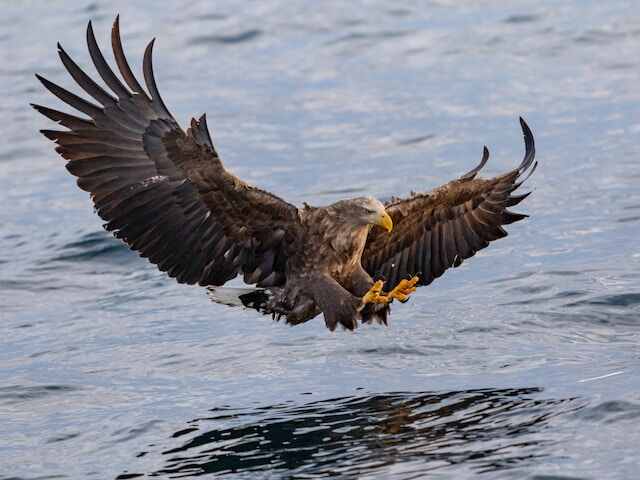
Frequently Asked Questions
How do eagles locate turtles in their environment?
Turtle behavior and eagle hunting techniques play crucial roles in how eagles locate turtles. Eagles use their keen eyesight to spot turtles on land or in the water, and may employ various hunting strategies to catch them.
What are the physical characteristics that allow eagles to successfully catch and consume turtles?
The physical characteristics of eagles, such as their keen eyesight, powerful talons, and strong beaks, enable them to successfully catch and consume turtles. These attributes, combined with their hunting techniques and understanding of turtle predator prey dynamics, contribute to their ability to capture and feed on turtles.
Are there any negative impacts on the ecosystem if eagles were to disappear or significantly reduce their consumption of turtles?
The disappearance or significant reduction of eagle consumption of turtles could have negative impacts on the ecosystem. This may disrupt the balance of the food chain and lead to an increase in turtle populations, affecting other organisms and their interactions within the ecosystem.
Are there any specific strategies or techniques that eagles employ when hunting turtles?
The eagle’s hunting techniques involve aerial surveillance, accurate swooping, and strong talons. Turtles have developed evasion strategies such as retracting into their shells, camouflage, and hiding in water to escape predation.
Are there any other predators that compete with eagles for turtle prey in their habitat?
Competing predators for turtle prey in eagle habitats include other birds of prey such as ospreys and hawks, as well as large reptiles like alligators and crocodiles. Conservation efforts focus on preserving habitats and managing predator populations.
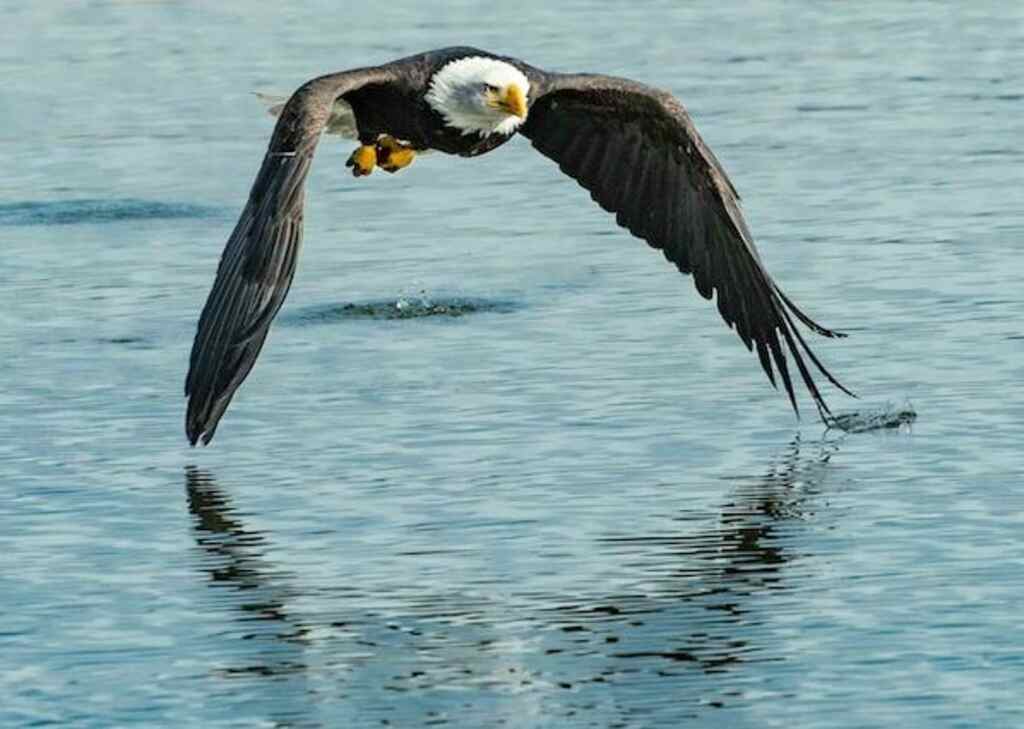
Conclusion
In conclusion, the hunting habits of eagles and their predation on turtles play a crucial role in maintaining the delicate balance of ecosystems.
Eagles exhibit remarkable adaptations that enable them to effectively hunt and consume turtles, showcasing their incredible survival and hunting skills.
The conservation of both turtles and eagles is of utmost importance to preserve the natural order and biodiversity.
These majestic creatures symbolize strength, resilience, and the interconnectedness of all living beings. Observing them in their natural habitat provides a glimpse into the intricate beauty of nature.
To delve deeper into this subject, further research opportunities and resources are available, inviting us to explore the fascinating world of eagles and turtles.

